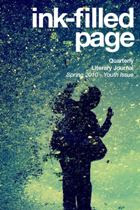 Atherton: The House of Power, by Patrick Carman
Atherton: The House of Power, by Patrick CarmanThis is the first installation of the creative young adult series by best-selling author, Patrick Carman, which introduces the rich world of Atherton, a land with 3 levels: the lush Highlands, rustic Tabletop, and the desolate Flatlands. The story centers primarily around the adventures of young Edgar, an orphan from Tabletop who was raised as a worker in the fig grove. As Edgar secretly climbs the forbidden cliffs to the Highlands, he discovers terrible secrets which will change his world forever. This story shows Edgar's growth from a mischievous loner to an intrepid hero who learns the value of trust and friendship, as he and his new friends unite against horrifying creatures, a power-hungry dictator, and a mad scientist's wicked plots. The book features a detailed new world, rife with intrigue and a strange history that is supplemented with online activities (www.athertonseries.com) explaining fun facts about Atherton and the mysterious Dark Planet. The plot progresses quickly, with plenty of twists and surprises along the way.
The only drawbacks are the lackluster language and—at times—flat character development. Considering the complexity of the themes—including greed, violence, and abuse of power—the language seems too simplistic and almost dull, which is especially apparent in his treatment of characters. Although Carman clearly taken great care to create detailed and captivating personalities to populate his novel, he does not allow his readers to figure this out for themselves. Rather than demonstrate a character’s motives through action or dialogue, Carman simply explains their intentions. This creates a narrative barrier between the readers and characters, because the readers do not need to really engage themselves in the story and characters’ lives to understand them. While this psychologically analytical approach might appeal to an older crowd, I fear it might make connection or identification with the characters difficult for the young target audience. The depiction of the archetypal child characters—brave Edgar, studious Samuel, and the bossy, but clever Isabel—is surprisingly colorless, which is disappointing considering their potential to have vibrant personalities. Likewise, Lord Phineus is certainly malicious, but does not have nearly as mysterious or ominous a presence as he might, because we are told exactly what greedy and malevolent thoughts prompt his actions. Carman needs to give his audience more credit and let his characters speak for themselves. Don't misunderstand me; the strong personalities are there, they are just dwarfed by the dominant narrative presence. Nonetheless, I have no doubts that the intricate world and riveting plot (complete with enthralling cliff-hanger) will be more than sufficient to capture his readers' imaginations, leaving them eager for book two.
-Review by Julie Franks, Indigo Editing, LLC
The only drawbacks are the lackluster language and—at times—flat character development. Considering the complexity of the themes—including greed, violence, and abuse of power—the language seems too simplistic and almost dull, which is especially apparent in his treatment of characters. Although Carman clearly taken great care to create detailed and captivating personalities to populate his novel, he does not allow his readers to figure this out for themselves. Rather than demonstrate a character’s motives through action or dialogue, Carman simply explains their intentions. This creates a narrative barrier between the readers and characters, because the readers do not need to really engage themselves in the story and characters’ lives to understand them. While this psychologically analytical approach might appeal to an older crowd, I fear it might make connection or identification with the characters difficult for the young target audience. The depiction of the archetypal child characters—brave Edgar, studious Samuel, and the bossy, but clever Isabel—is surprisingly colorless, which is disappointing considering their potential to have vibrant personalities. Likewise, Lord Phineus is certainly malicious, but does not have nearly as mysterious or ominous a presence as he might, because we are told exactly what greedy and malevolent thoughts prompt his actions. Carman needs to give his audience more credit and let his characters speak for themselves. Don't misunderstand me; the strong personalities are there, they are just dwarfed by the dominant narrative presence. Nonetheless, I have no doubts that the intricate world and riveting plot (complete with enthralling cliff-hanger) will be more than sufficient to capture his readers' imaginations, leaving them eager for book two.
-Review by Julie Franks, Indigo Editing, LLC





No comments:
Post a Comment